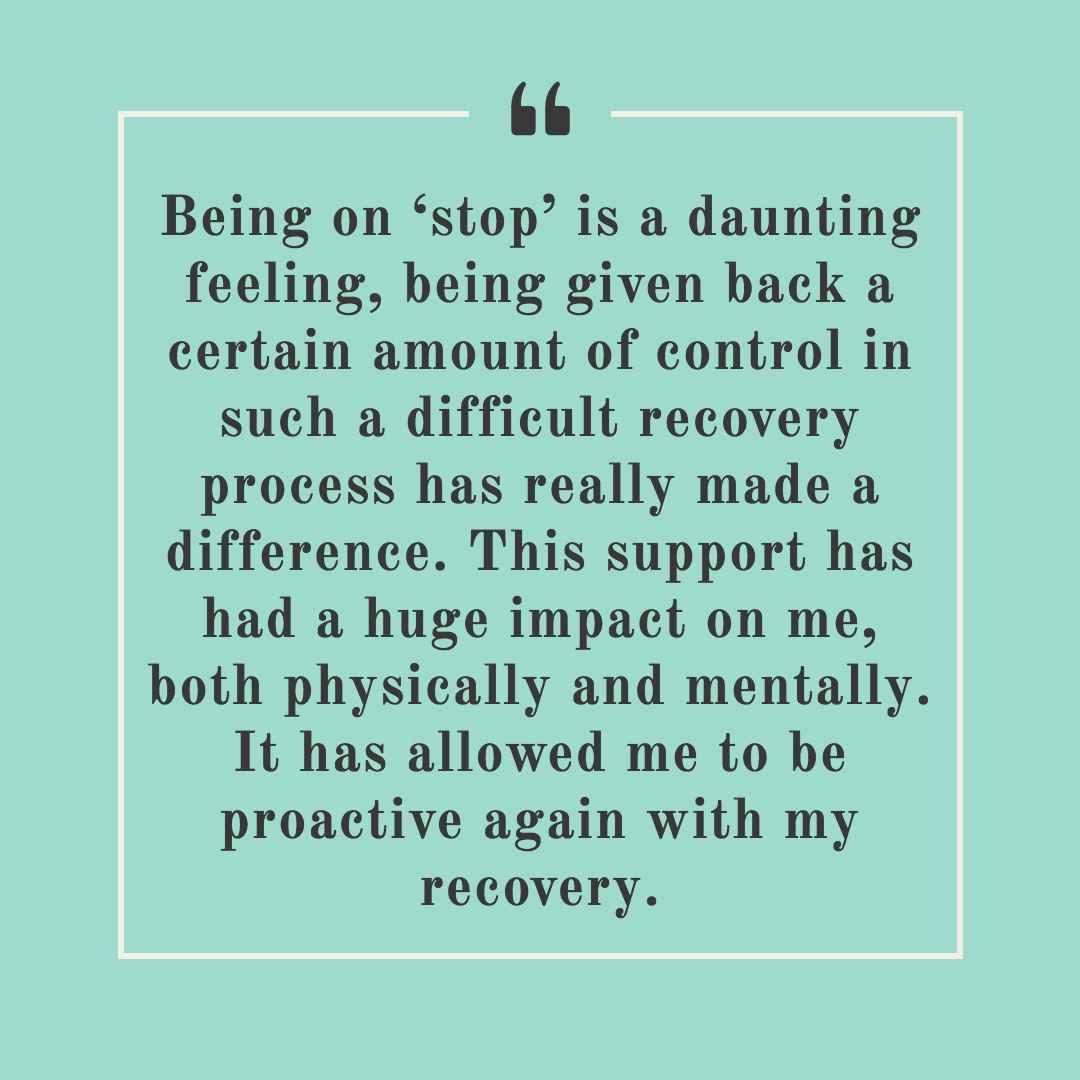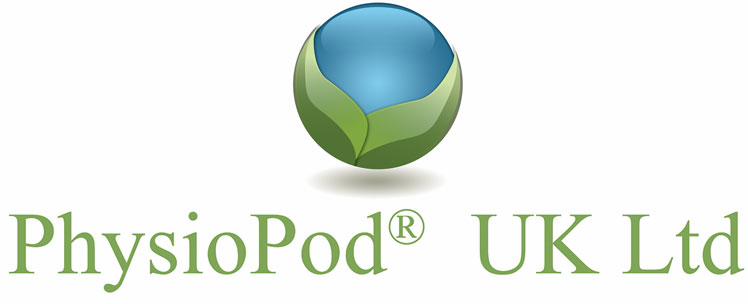Use of Deep Oscillation for Burn Scar Management
A Case Report from Janine Evans, Advanced Practitioner Occupational Therapist at The Welsh Centre for Burns & Plastic Surgery,
Following a burn injury, treatments goals include the reduction of pain, oedema and itching, promotion of mobility and function, improving scar quality, skin colour and elasticity and to help with any psychological symptoms. One of the techniques most commonly used to facilitate these goals is scar massage (1-4). However, as well as being very time consuming for both patient and therapist; it can be uncomfortable for the patient and can also cause painful joints in the therapists performing the treatment.
At The Welsh Centre for Burns & Plastic Surgery, we have found that the use of gentle, non-invasive Deep Oscillation massage can alleviate these problems, due to it's gentle application, which does not require pressure to achieve effective results, to a clinically proven depth of 8cm depth (Figure 1).

Figure 1: Deep Oscillation electrostatic massage
permeates a clinically proven depth of 8cm
"One of the methods, whose task is not only streamlining an already existing scar but also action in its early stage of formation, is called deep oscillation. It is a noninvasive, painless method that is based on intermittent electrostatic field created by an apparatus between the applicator and the patient’s tissues. During the procedure the tissues are pulled by electrostatic forces and then released in the selected frequency range (5–250 Hz) [6]. It evokes a unique, deep resonant vibration, also known as tissue oscillation, which permeates the skin, connective tissue, hypodermatic body fat, muscles, blood, and lymphatic vessels to a depth of 8 cm [7]. Inside the tissues spanned by the resonant vibration, the stimulation of basic substance takes place, which results in improved process of endosmosis and transportation of inter-tissue fluids containing, among other things, proteins, cellular decay products, and neurotransmitters [8]. The aim of deep oscillation is an intentional interference in the physiological processes of tissue trophism. In the process of healing (regeneration) of the damaged tissues, deep oscillation has significant importance. The use of this treatment method can help to intensify and improve processes of wound cicatrising. Thanks to the effect of reducing the oedema and anti-inflammatory impact, trophism improvement, and elimination of local metabolites in every tissue layers, reconstruction of the tissue and the scar formation increase on many levels. It is documented by the crucial improvement of planimetric and biochemical parameters of wound healing. The advantage of deep oscillation is its usage in the very early disease stage, even on the second day after the procedure. Thanks to the unique, mild remedying, deep oscillation is used as a first-line treatment among other things after skin graft, mastectomy, Caesarean section, shunts, scorches, endoprosthesis, helcosis, and diabetic foot. In chronic afflictions, among other things, in case of perennial scars, this therapy helps to decrease tissue fibrosis and sclerosis"
Deep Oscillation electrostatic massage (9) can be administered by a therapist via vinyl gloves to patient or via applicator (Figure 2) or by the patient themselves via applicator/applicators (Figure 3); working through the entire depth of the tissue to provide relief of discomfort and mobilise scar tissue, making it feel more supple.

Figure 2 - DEEP OSCILLATION in burn scar massage applied
through vinyl gloves

Figure 3 - The Deep Oscillation Personal can be used by
the patient at home via different sized applicators
Prior to the onset of the COVID-19 pandemic, we were utilising the Hivamat 200 (Deep Oscillation device) in our burns out-patient clinic with a 38 year old lady who had sustained a 46% flame burn in August 2019. Her burn injuries had required numerous skin grafting procedures and she unfortunately went on to develop very aggressive hypertrophic scarring, which caused significant discomfort and limitations in her range of movement and function.
Following sessions with the Hivamat 200 using the burn and oedema protocols set out in the manual, the lady reported reduced discomfort, and increased mobility of the scar tissue. However, seven months in to her recovery and after only a few sessions, we were forced to cancel all non-urgent out-patient services in response to the COVID-19 pandemic and the treatment had to be discontinued. The patient was very distressed by this and we were concerned that this would be detrimental to her outcomes.
I was aware that Physiopod supplied small, handheld units that patients could use to self-administer deep oscillation within their own home and approached a charity called Dan’s Fund for Burns to see whether they would be able to support the patient in the rental of this equipment, so that she could continue her treatment at home during lockdown.
Fortunately, they agreed to my request and the patient has reported the ongoing benefits (Figure 4) which include:
• Instant itch relief
• Decreased hypersensitivity
• Improved texture
• Increased mobility and range of movement
In addition to the physical benefits of deep oscillation therapy, the patient found it very empowering to be able to take a lead in her own care (10-11), which in return helped to balance her mental health.

Figure 4 - Patient recorded results - 4th May 2020 to 14th June 2020
|
WEEK 1 |
WEEK 2 |
WEEK 3 |
WEEK 4 |
WEEK 5 |
WEEK 6 |
|
|
HANDS |
Soothing to tops of hands & relieved soreness to underside or wrists, a particularly sensitive area |
Visual difference to texture of scaring on hands, smoother in appearance |
Continued improvement with lump (raised scar) on top of left wrist, beginning to flatten |
Underside of wrists less sore, easier to the touch general movement has improved |
Raised scarring on underside of wrists, reducing in size and appearance |
Very pleased with progress on hands – redness & raised scarring reducing significantly Continued improvement in texture and movement |
|
CHEST |
Instant relief from itch, reducing the urge to scratch after treatment . |
Continued relief to chest. Most satisfying area to treat. Scratching frenzies reduced significantly |
Internal feeling on chest, that under the skin continuing to improve but no visual improvement |
Continued relief of itch, still no visible change |
As week 4 |
As week 4 & 5 |
|
LEGS |
Concentrating on lumps (hard scarring mass under skin surface) No physical or visual improvement |
Continued working on lumps. No reduction in size, physical or visual improvement |
As week 2 |
Area on body where oscillator treatment had least impact and improvement. Continued treatment to problem areas but little result or change |
As week 4 |
As week 4 & 5 |
|
NECK |
Painful to use on neck area, could only manage 5 mins of use per session |
Persevering with neck area and chin but still remains painful |
Less painful, working through pain threshold as advised |
No visual improvement |
Skin beginning to soften and slight improvement to mobility of neck. No improvement to aggressive scarring between chest, neck and chin |
As week 5 |
|
FACE |
Side of face and side of forehead – Soothing and feeling smoother after first session |
Continued smoothing of skin |
raised scarring on side of forehead flattening |
No further smoothing or flattening to side of face. |
No further change |
Raised scaring on forehead has completely flattened. No further changes to side of fac |
- Device: Deep Oscillation Personal with bespoke card programmed for burn scars
- Protocol: 15 mins treatment in the morning and 15 mins treatment in the evening, to each body area using applicators of varying diameters dependent on size of area.
- 3 to 5 days
References
-
Observation of deep oscillation usage and its effectiveness on burn scars – case report. Pogorzelska, J. et al (2017) - Medical Studies/Studia Medyczne, 33(1), pp.46-50. https://doi.org/10.5114/ms.2017.66956
-
Physical methods of lymphatic drainage in the early phase of post-traumatic physiotherapy of the locomotive system.Trybulski R. -Manual medicine. Polish Journal of Manual Medicine. G?ogów 2016; 27-42.
- Mechanisms of Deep Oscillation, Reinhold J. - MLDUK The Journal, April 2017
-
Burn Survivor Utilises Deep Oscillation Therapy in Self Care During Lockdown, Physiopod News

